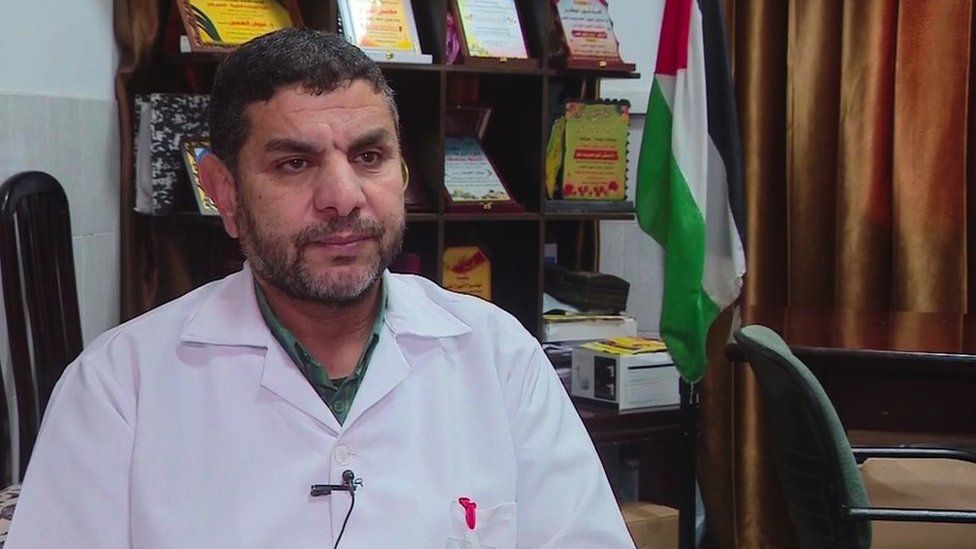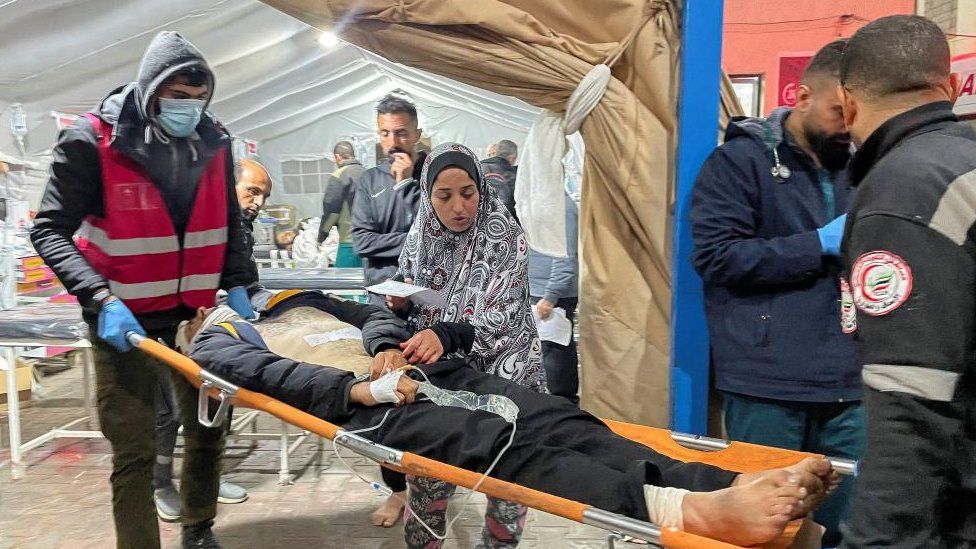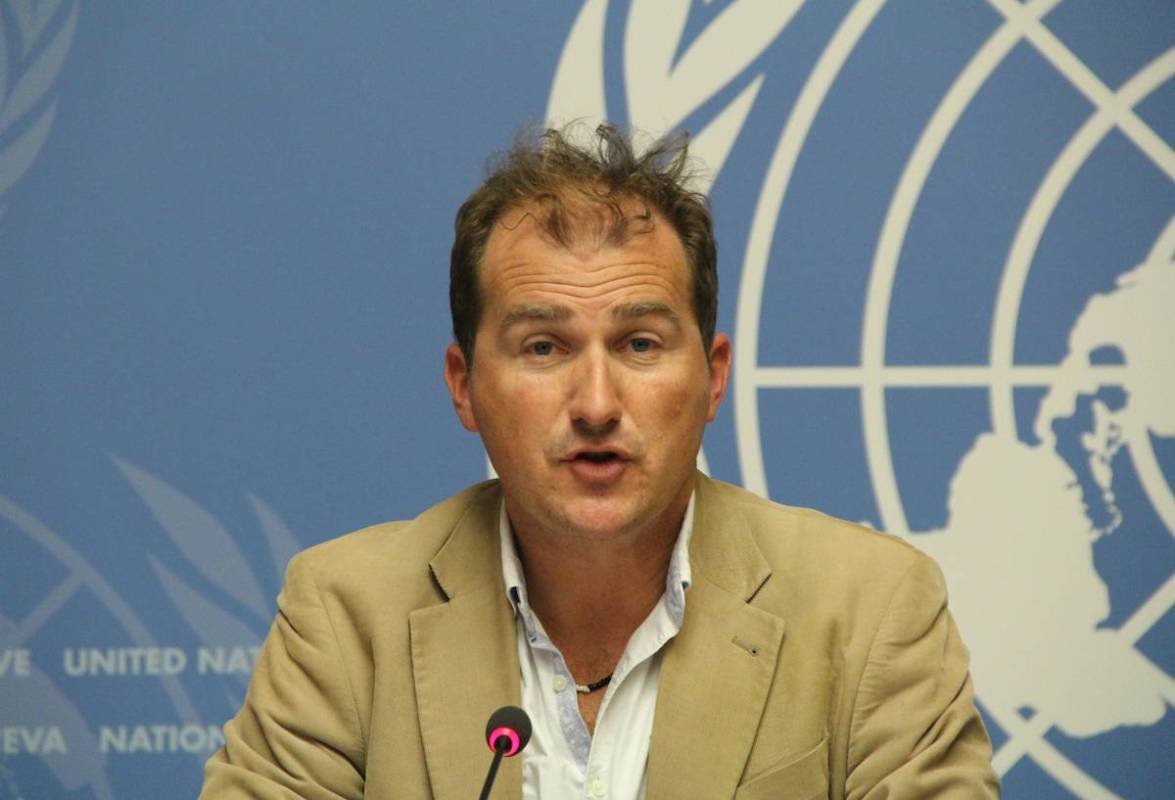
“شمال غزة يموت جوعاً”، هاشتاج أطلقه مغردون، بعد وفاة أطفال في القطاع
زينب ضبع
ضجت مواقع التواصل الاجتماعي بنداءات تطالب بإنقاذ مدن شمالي قطاع غزة من “مجاعة” أدت إلى موت عدد من الأطفال، بحسب ما قال المسؤول الإعلامي للهلال الأحمر الفلسطيني لبي بي سي .
وتداول مغردون عبر منصات التواصل الاجتماعي إكس (تويتر سابقاً)، وفيسبوك هاشتاغات مثل “أنقذوا شمال غزة”، و”أنقذوا غزة من المجاعة”، و”شمال غزة يجوع”.
لكن الهاشتاغ الأكثر رواجاً كان “شمال غزة يموت جوعاً”.
ومؤخرا انتشر مقطع فيديو لشاب فلسطيني، يدعى يحيى محمود، عبر منصة إنستغرام قال خلاله إنه “لم أكل سوى وجبة واحدة منذ أربعة أيام”.
وتابع محمود:” رأيت أُناساً يضعون الخبز في الماء”، لأكله.
كما نشرت مجموعة من الصحفيين في شمال غزة فيديوهات مصورة، أطلقوا خلالها “النداء الأخير” قبل أن يخيم خطر المجاعة التي قد تفتك بشمالي القطاع.
وكتب الصحفي أنس الشريف الذي يعمل لدى شبكة الجزيرة القطرية، منشوراً عبر حسابه الخاص على منصة أكس، قائلاً: “في شمال غزة المجاعة تجاوزت كل المراحل”.
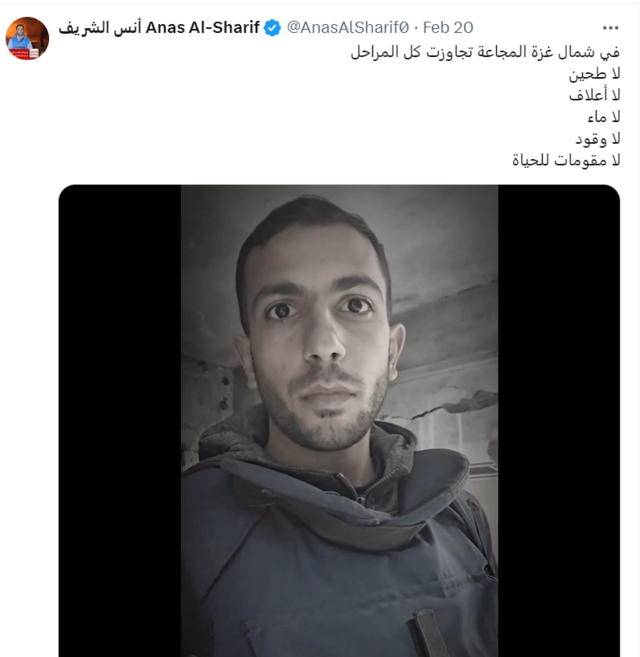
“نسينا شكل الطماطم والخيار والفلفل والبطاطا”
وعبر منصة إكس، كتب كذلك الصحفي عبد القادر صباح، منشوراً قال فيه: “أعلاف الحيوانات التي كانت تستخدم بديلاً للطحين في شمال غزة نفدت، ولا يوجد أي شيء يمكن أكله في غزة وشمالها”.
وقال أبو عمر، وهو اسم مستعار لأحد سكان مدينة جباليا شمالي قطاع غزة، لبي بي سي نيوز عربي “لا أحد يشعر بنا ، ولا أحد يشعر أن هناك بشراً يعيشون في شمال غزة”.
ويشكو أبو عمر من عدم دخول أي مساعدات إنسانية على الإطلاق إلى الشمال، قائلاً: “لقد نسينا شكل الطماطم والخيار والفلفل والبطاطا”.
ويستدرك في حديثه لنا، قائلاً: “أصبحت أطعم أولادي أكل الدواب، وإذ مر الوقت ( وبقي الوضع كما هو عليه)، سيموت أولادي بسبب الجوع”.
ويزداد المشهد قتامة أكثر في شمالي القطاع، عندما يروي لنا أبو عمر مشاهدته يومياً لأناس يتساقطون، مغشياً عليهم، أثناء سيرهم في الشوارع بسبب الجوع.
وقد أُصيب ابن أبو عمر (يبلغ من العمر عشر سنوات) بالإعياء بسبب الجوع ، لكنه تمكن من إسعافه وأخذه إلى المستشفى، حيث “أعطاه الأطباء محلولاً مشبعاً”.
لكنه يعتبر هذا المحلول حلاً مؤقتاً لنقص الطعام و يتساءل حول ما الذي يمكن أن تصل إليه الأمور مستقبلا في شمال القطاع، في ظل نفاد الأطعمة.
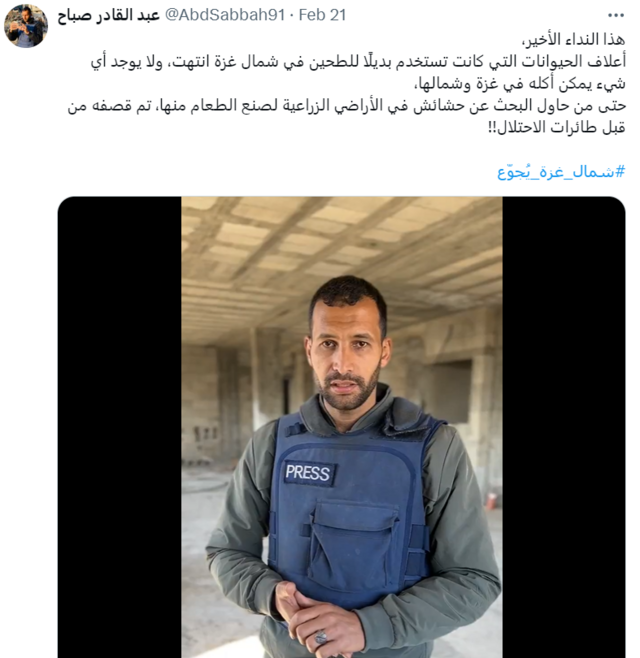
” أناس كثيرون ماتوا من الجوع”
ويرى سمران العطار، الذي نزح من شمال القطاع إلى جنوبه أن المجاعة لم تبدأ الآن، بل بدأت منذ شهر مضى.
فمنذ حوالي شهر كان شقيقه، المقيم في الشمال، يتضور جوعاً وبدأ يبحث عن أي طعام داخل منزل كان يحاصره الجيش الإسرائيلي قبل أن ينسحب منه.
وأثناء بحثه عما يسد رمقه من الطعام، عثر شقيق سمران على “شوال طحين”، وعند فتحه وجد بداخله “أشلاء بشرية”، لكنه استخرجها وأخذ الدقيق، لإعداد خبز من أجل إطعام عائلته كما يروي.
وتابع العطار في حديثه لبي بي سي “استخدام هذا الطحين لأغراض الطعام، أفضل من أكل لحم الحمير”.
ولمعرفة تفاصيل أكثر عما وصلت إليه الأمور في المنطقة التي يقطن بها شقيق سمران شمال القطاع ، تحدثنا إليه هاتفياً.
وبدأ شقيق سمران، الحديث معنا عبر الهاتف، قائلاً إن “وضعنا صعب للغاية، نحن لا نجد أي طعام أو طحين أو شراب.. حتى أكل الدواب أكلناه”.
كما تحدثنا كذلك لمروة وهو اسم مستعار لسيدة تعيش في مدينة جباليا شمالي القطاع، و قالت لنا إن أكثر الأطعمة المتاحة، في الشمال هي الخبيزة التي تقوم بسلقها ليحتسي أطفالها مرقتها.
وعلى الرغم من أن الخبيزة تعد من الأكلات المنقذة للحياة في شمال غزة، تقول مروة إن ” هناك أناس كثيرون ماتوا من الجوع”.
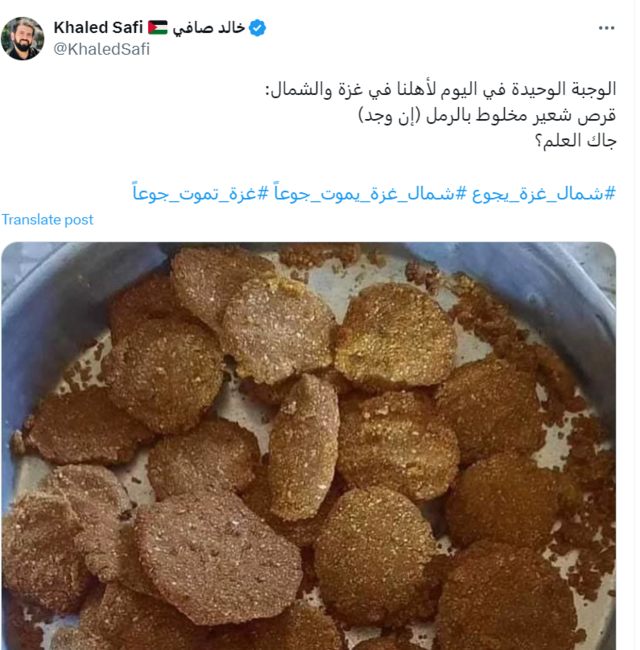
“المجاعة قد بدأت بالفعل”
لا يمتلك الهلال الأحمر الفلسطيني في قطاع غزة إحصائية دقيقة لأعداد الموتى الذين توفوا في شمال القطاع بسبب الجوع.
إذا يقول رائد النمس، المسؤول الإعلامي للهلال الأحمر لبي بي سي إن “هناك شهادات ومعلومات أولية بوجود وفيات بين الأطفال وكبار السن أصحاب الأمراض المزمنة بسبب عدم الحصول على الطعام”.
ويوضح النمس أن قطاع غزة بأكمله يعاني من مجاعة، لكن “أشدها في شمال القطاع ” لأن مناطق الوسط والجنوب يدخلها “نوع من المساعدات” عن طريق معبر فح البري و”إن كانت شحيحة”، بحسبه.
وتابع: “يجب أن يكون هناك تدخل أممي حقيقي لأن الوضع أصبح كارثياً. كنا في السابق نحذر من حدوث مجاعة، الآن المجاعة قد بدأت بالفعل”.
وقد أعلن برنامج الغذاء العالمي مؤخراً إيقاف تقديم المساعدات الغذائية “المنقذة للحياة” إلى شمال غزة بشكل مؤقت، بسبب معاناة طواقمه من “فوضى كاملة وعنف نتيجة انهيار النظام المدني”، وتعرضها لإطلاق نار وأعمال نهب.
ورداً على طلب من بي بي سي نيوز عربي للتعليق، قال مكتب المتحدث باسم وحدة تنسيق أعمال الحكومة في المناطق التابعة، وهي هيئة تتبع لوزير الدفاع الإسرائيلي في بيان “إنّ إسرائيل تعمل بنشاط على تسهيل إيصال المساعدات إلى شمال قطاع غزة”.
كما قالت وحدة تنسيق أعمال الحكومة في المناطق الإسرائيلية إنّ الجيش الإسرائيلي يعمل مع منظمات الإغاثة الدولية لتوفير الغذاء والمعدات الطبية والمزيد من المساعدات الإنسانية لشمال قطاع غزة.
وأضاف بيانها أنه أُدخل منذ بداية الحرب ” أكثر من 13,830 شاحنة مساعدات إلى قطاع غزة عبر معبري رفح وكرم أبو سالم، تحمل أكثر من 167,080 طُناً من المواد الغذائية و 23,220 طُناً من المياه.
وقالت الوحدة إن إسرائيل سهلت كذلك، منذ بدء القتال، تسليم أكثر من 17,700 طُناً من المعدات الطبية والمستلزمات الصحية .
(المصدر: بي بي سي نيوز عربيه)



